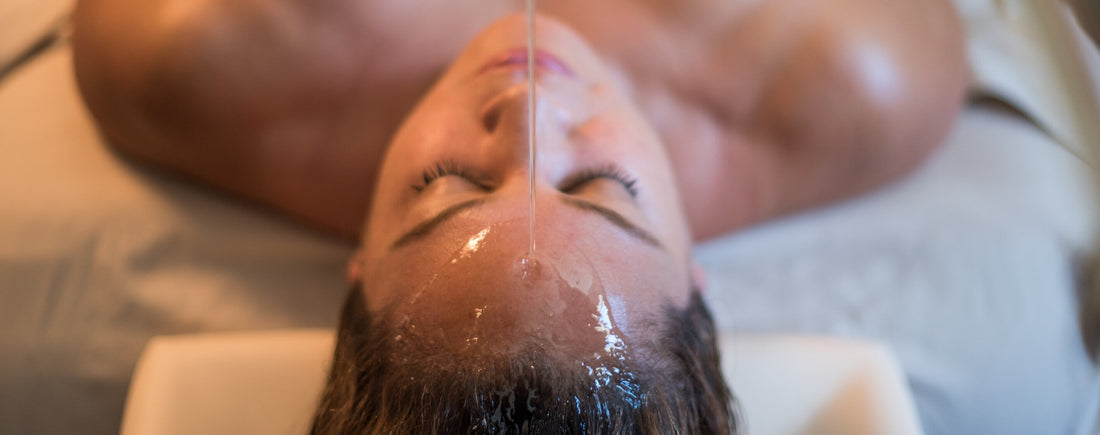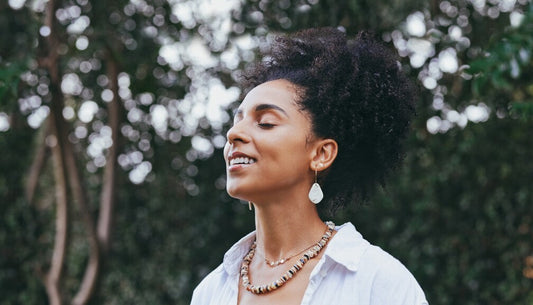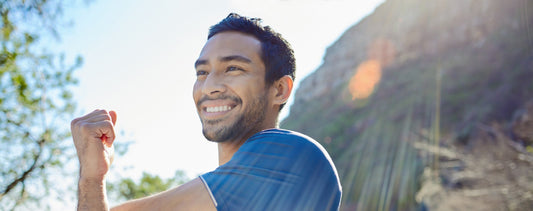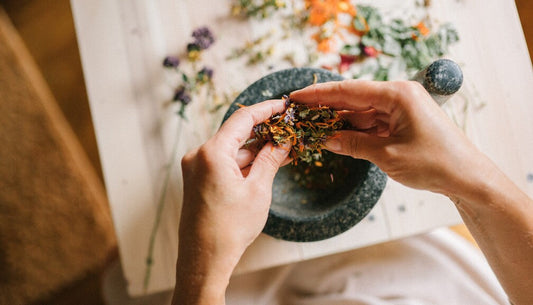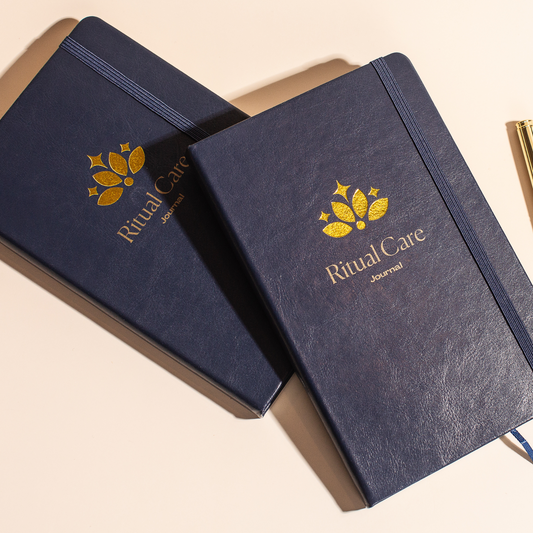Many of us have had conventional massage that works to release tight muscles and create relaxation. In Western medicine, massage can be used for specific issues, such as musculoskeletal sports injuries and performance, massage for lymphatic drainage after cancer surgery, or for certain pain syndromes.
Massage may indeed be the most primitive treatment for pain, and instinctually we massage areas of discomfort. Manipulation of the tissue results in the release of neurotransmitters, such as serotonin and endorphins, which can reduce pain, anxiety, and stress. By encouraging circulation and loosening up adhesions in connective tissues, we encourage normal functioning. And certainly one can feel the relaxation induced by a healing massage.
But massage can be much more than this. In the medical system of Ayurveda, massage is considered medical treatment, and various massages, strokes, and pressure points can be used for specific health conditions. Depending on the need, traditional Ayurvedic massage can include dry rubs with herbs, massaging herbalized oils on the skin, or use of milk, buttermilk, rice water, or honey as well as various poultices. All of these can have differing effects on the tissue.
In addition to the physical effects of massaging the tissues, Ayurveda describes a more complex process by which massage also exerts beneficial effects on our mind-body physiology. Massage in Ayurveda is valued for its ability to heal the body as well as the mind. It releases toxicity from the body as well as the mind and emotions and awakens the natural healing process. As an integrative medical provider, I have seen people have incredible transformational experiences after a single Ayurvedic massage. Doing them daily as part of a synchronized healing process or detox can dramatically improve people’s physical and mental health.
Ayurvedic massage was first described thousands of years ago and has been continually used as medical treatment by Ayurvedic physicians across India. It is begun at birth and is performed regularly throughout a person’s life for general health as well as part of complete detoxification programs.
According to Ayurveda, muscle tissue is connected to the marmani, or marma points, which are energy points where consciousness most expresses itself. During massage, pressing on marma points, also known as acupressure points, releases neurotransmitters that bring relaxation to the muscles, and through energetic connections of the muscle to other organs, it also sends messages to internal organs that can restore proper function. Marma points are similar to acupuncture points, in that they are said to exert an effect on distant parts of the body.
However, from an Ayurvedic perspective, massage does much more than simply heal the tissues and organs. When a muscle is rigid, it blocks the flow of awareness and emotions can get stuck in the muscles. By using oils and specific strokes during Ayurvedic massage, we can release suppressed emotions that are stuck in the tissues and can help heal past emotional trauma. Indeed, this is what is observed during Ayurvedic cleansing programs where massage is done daily.
Oils
Various oils are used during Ayurvedic massage and are often customized to each person’s body type, or dosha. Oils not only nourish the tissue but acts as a carrier through the skin and are an effective delivery system for herbs. Traditionally, most massage is performed with sesame oil, often with essential oils added based on what mind-body energy, or dosha, needs balancing. Oils can also be cooked with herbs to carry the properties of the herbs into the body through the skin.
Sesame oil is most commonly used for Ayurvedic massage and, in general, can be used for all doshas, although best for vata and kapha body types. It can be used in moderation for pitta types but may create too much heat resulting in rashes. Other base oils that are used in Ayurvedic massage include coconut, olive, almond, sunflower, mustard, and ghee. They have varying effects on the doshas, as do essential oils:
B = balances; A = aggravates; N = neutral, but can aggravate in excess.
In addition to oils, some Ayurvedic treatments may involve applying milk, buttermilk, ghee, honey, rice water, or various poultices depending on what is being treated. By combining various base materials, essential oils, and herbs, Ayurvedic massage can be customized to treat a variety of health conditions and symptoms.
There are many types of Ayurvedic massage, each with its own intentions and benefits. The strokes and marma points that are used are unique to each treatment and an understanding of the effects of the strokes is necessary when performing these massages. Ayurvedic massage was typically used prior to, and during, detoxification programs. They can be combined to achieve various levels of cleansing of the body and mind. They can also be experienced individually on a regular basis for their health benefits.
Some classic Ayurvedic massages include:
Abhyanga – This classic full-body oil massage has many variations, but overall is used to balance all of the channels and tissues of the body. From an Ayurvedic perspective, this massage technique opens up physical and emotional channels, and balances the doshas and chakras. The strokes are performed with gentle pressure, improving both arterial and lymphatic circulation. A version of this can be done as a daily self-massage for regular nourishing of the skin and tissues.
Vishesh – This massage is a deep tissue form of abhyanga using deep, constant pressure. It is intended to address issues in the muscles and fatty tissue layers. It is best used for pitta and kapha body types and is used selectively in vata body types, where more gentle forms of massage are needed.
Shirodhara – Most people familiar with Ayurvedic massage will recognize this classic oil pour over the forehead. This is one of the most powerful treatments for balancing the mind. It can help with anxiety, sleep disturbances, and other stress-related conditions. It is typically preceded by a full body massage and then warm oil is poured gently over the forehead to calm the nervous system and induce a deep sense of relaxation and tranquility. Often people describe altered levels of consciousness, through which it is felt deep-seated imbalances of the mind can be released.
Swedana –This term literally means ‘sweat’. In this treatment, the body is first massaged with oils, typically herbalized, and then the body is placed into a steam tent which warms the body. The head is kept cool outside of the tent while the body heats up to create a sweat and release deep-seated physical and emotional toxicity while keeping the mind calm. As pores and channels open, this facilitates the absorption of oils and herbs into the body.
Garshana – This term translates as ‘rubbing’, and this dry massage is a form of exfoliation. Vigorous strokes are used with either raw silk, wool, or cotton gloves to remove dead skin cells, stimulate oil glands on the skin, and encourage circulation and lymphatic flow.
At the Chopra Health Retreat at CIVANA, specifically designed daily Ayurvedic massages encourage circulation, detoxify the tissue, facilitate elimination, nourish the tissues, and rejuvenate the mind.
Ayurvedic massage offers a sophisticated and holistic system of healing therapies that can be used to facilitate balance in body, mind, and emotions. The ultimate purpose of Ayurvedic massage is to awaken the natural intelligence within every cell and facilitate communication within all the cells in the body so the whole system works toward creating health and wellbeing.
References:
Lad, Vasant. 2012. Textbook of Ayurveda, Volume 3. Albuquerque, NM: The Ayurvedic Press.
Douillard, John. 2004. The Encyclopedia of Ayurvedic Massage. Berkeley, CA: North Atlantic Books.
Kshirsagar, Suhas, et al. 2020. Panchakarma: The Ayurvedic Art and Science of Detoxification. Twin Lakes, WI: Lotus Press.
Johari, Harish. 1996. Ayurvedic Massage: Traditional Indian Techniques for Balancing Body and Mind. Rochester, VT: Healing Arts Press.
Give yourself the gift of six days dedicated to relaxation, detoxification, and healing at the Chopra Health Retreat at CIVANA.
Perfect Health, the Chopra Health Retreat goes beyond the physical and teaches the centuries-old healing method of Ayurveda to balance the mind, body and spirit. ","imageOverride":{"_ref":"00000179-15c7-d735-ab7d-bdc77c640001","_type":"4da1a812-2b2b-36a7-a321-fea9c9594cb9"},"eyeBrow":"EXPERIENCE DAILY AYURVEDIC MASSAGE","theme.chopra-theme-default.:core:promo:Promo.hbs.hasTab":false,"theme.chopra-theme-default.:core:promo:Promo.hbs.tabText":null,"theme.chopra-theme-default.:core:promo:Promo.hbs._template":"/core/promo/ArticleBodyProductCard.hbs","theme.chopra-theme-default.:core:promo:Promo.hbs.features":["5-night stay at CIVANA Wellness Resort & Spa","Daily massage treatments","Meditation & yoga classes","Ayurveda-inspired meals","Wellness workshops","Physician consultation","Gentle detoxification kit"],"theme.chopra-theme-default.:core:promo:Promo.hbs.buttonText":"Learn more","theme.chopra-theme-default.:core:promo:Promo.hbs.componentColourHighlight":"light-sunshine","_id":"00000188-4663-db4d-ab8d-4f7fb8fd0012","_type":"5acecc5b-e1a8-3b07-a95c-6d49530185ef"},"theme.chopra-theme-default.:core:enhancement:Enhancement.hbs._template":null,"_id":"00000188-4663-db4d-ab8d-4f7fb8ee0000","_type":"c5b60bfe-fc18-3e1d-bd70-75608e803f66"}">
Massage may indeed be the most primitive treatment for pain, and instinctually we massage areas of discomfort. Manipulation of the tissue results in the release of neurotransmitters, such as serotonin and endorphins, which can reduce pain, anxiety, and stress. By encouraging circulation and loosening up adhesions in connective tissues, we encourage normal functioning. And certainly one can feel the relaxation induced by a healing massage.
But massage can be much more than this. In the medical system of Ayurveda, massage is considered medical treatment, and various massages, strokes, and pressure points can be used for specific health conditions. Depending on the need, traditional Ayurvedic massage can include dry rubs with herbs, massaging herbalized oils on the skin, or use of milk, buttermilk, rice water, or honey as well as various poultices. All of these can have differing effects on the tissue.
In addition to the physical effects of massaging the tissues, Ayurveda describes a more complex process by which massage also exerts beneficial effects on our mind-body physiology. Massage in Ayurveda is valued for its ability to heal the body as well as the mind. It releases toxicity from the body as well as the mind and emotions and awakens the natural healing process. As an integrative medical provider, I have seen people have incredible transformational experiences after a single Ayurvedic massage. Doing them daily as part of a synchronized healing process or detox can dramatically improve people’s physical and mental health.
What makes Ayurvedic massage unique?
Ayurvedic massage was first described thousands of years ago and has been continually used as medical treatment by Ayurvedic physicians across India. It is begun at birth and is performed regularly throughout a person’s life for general health as well as part of complete detoxification programs.
According to Ayurveda, muscle tissue is connected to the marmani, or marma points, which are energy points where consciousness most expresses itself. During massage, pressing on marma points, also known as acupressure points, releases neurotransmitters that bring relaxation to the muscles, and through energetic connections of the muscle to other organs, it also sends messages to internal organs that can restore proper function. Marma points are similar to acupuncture points, in that they are said to exert an effect on distant parts of the body.
However, from an Ayurvedic perspective, massage does much more than simply heal the tissues and organs. When a muscle is rigid, it blocks the flow of awareness and emotions can get stuck in the muscles. By using oils and specific strokes during Ayurvedic massage, we can release suppressed emotions that are stuck in the tissues and can help heal past emotional trauma. Indeed, this is what is observed during Ayurvedic cleansing programs where massage is done daily.
The features of Ayurvedic massage
Oils
Various oils are used during Ayurvedic massage and are often customized to each person’s body type, or dosha. Oils not only nourish the tissue but acts as a carrier through the skin and are an effective delivery system for herbs. Traditionally, most massage is performed with sesame oil, often with essential oils added based on what mind-body energy, or dosha, needs balancing. Oils can also be cooked with herbs to carry the properties of the herbs into the body through the skin.
Sesame oil is most commonly used for Ayurvedic massage and, in general, can be used for all doshas, although best for vata and kapha body types. It can be used in moderation for pitta types but may create too much heat resulting in rashes. Other base oils that are used in Ayurvedic massage include coconut, olive, almond, sunflower, mustard, and ghee. They have varying effects on the doshas, as do essential oils:
B = balances; A = aggravates; N = neutral, but can aggravate in excess.
| Oil Type | Vata | Pitta | Kapha |
| Sesame | B | A | B |
| Sunflower | B | B | N |
| Coconut | B | B | A |
| Mustard | B | A | B |
| Almond | B | N | A |
| Olive | N | B | B |
In addition to oils, some Ayurvedic treatments may involve applying milk, buttermilk, ghee, honey, rice water, or various poultices depending on what is being treated. By combining various base materials, essential oils, and herbs, Ayurvedic massage can be customized to treat a variety of health conditions and symptoms.
Types of Ayurvedic massage
There are many types of Ayurvedic massage, each with its own intentions and benefits. The strokes and marma points that are used are unique to each treatment and an understanding of the effects of the strokes is necessary when performing these massages. Ayurvedic massage was typically used prior to, and during, detoxification programs. They can be combined to achieve various levels of cleansing of the body and mind. They can also be experienced individually on a regular basis for their health benefits.
Some classic Ayurvedic massages include:
Abhyanga – This classic full-body oil massage has many variations, but overall is used to balance all of the channels and tissues of the body. From an Ayurvedic perspective, this massage technique opens up physical and emotional channels, and balances the doshas and chakras. The strokes are performed with gentle pressure, improving both arterial and lymphatic circulation. A version of this can be done as a daily self-massage for regular nourishing of the skin and tissues.
Vishesh – This massage is a deep tissue form of abhyanga using deep, constant pressure. It is intended to address issues in the muscles and fatty tissue layers. It is best used for pitta and kapha body types and is used selectively in vata body types, where more gentle forms of massage are needed.
Shirodhara – Most people familiar with Ayurvedic massage will recognize this classic oil pour over the forehead. This is one of the most powerful treatments for balancing the mind. It can help with anxiety, sleep disturbances, and other stress-related conditions. It is typically preceded by a full body massage and then warm oil is poured gently over the forehead to calm the nervous system and induce a deep sense of relaxation and tranquility. Often people describe altered levels of consciousness, through which it is felt deep-seated imbalances of the mind can be released.
Swedana –This term literally means ‘sweat’. In this treatment, the body is first massaged with oils, typically herbalized, and then the body is placed into a steam tent which warms the body. The head is kept cool outside of the tent while the body heats up to create a sweat and release deep-seated physical and emotional toxicity while keeping the mind calm. As pores and channels open, this facilitates the absorption of oils and herbs into the body.
Garshana – This term translates as ‘rubbing’, and this dry massage is a form of exfoliation. Vigorous strokes are used with either raw silk, wool, or cotton gloves to remove dead skin cells, stimulate oil glands on the skin, and encourage circulation and lymphatic flow.
At the Chopra Health Retreat at CIVANA, specifically designed daily Ayurvedic massages encourage circulation, detoxify the tissue, facilitate elimination, nourish the tissues, and rejuvenate the mind.
Ayurvedic massage offers a sophisticated and holistic system of healing therapies that can be used to facilitate balance in body, mind, and emotions. The ultimate purpose of Ayurvedic massage is to awaken the natural intelligence within every cell and facilitate communication within all the cells in the body so the whole system works toward creating health and wellbeing.
References:
Lad, Vasant. 2012. Textbook of Ayurveda, Volume 3. Albuquerque, NM: The Ayurvedic Press.
Douillard, John. 2004. The Encyclopedia of Ayurvedic Massage. Berkeley, CA: North Atlantic Books.
Kshirsagar, Suhas, et al. 2020. Panchakarma: The Ayurvedic Art and Science of Detoxification. Twin Lakes, WI: Lotus Press.
Johari, Harish. 1996. Ayurvedic Massage: Traditional Indian Techniques for Balancing Body and Mind. Rochester, VT: Healing Arts Press.
Give yourself the gift of six days dedicated to relaxation, detoxification, and healing at the Chopra Health Retreat at CIVANA.

